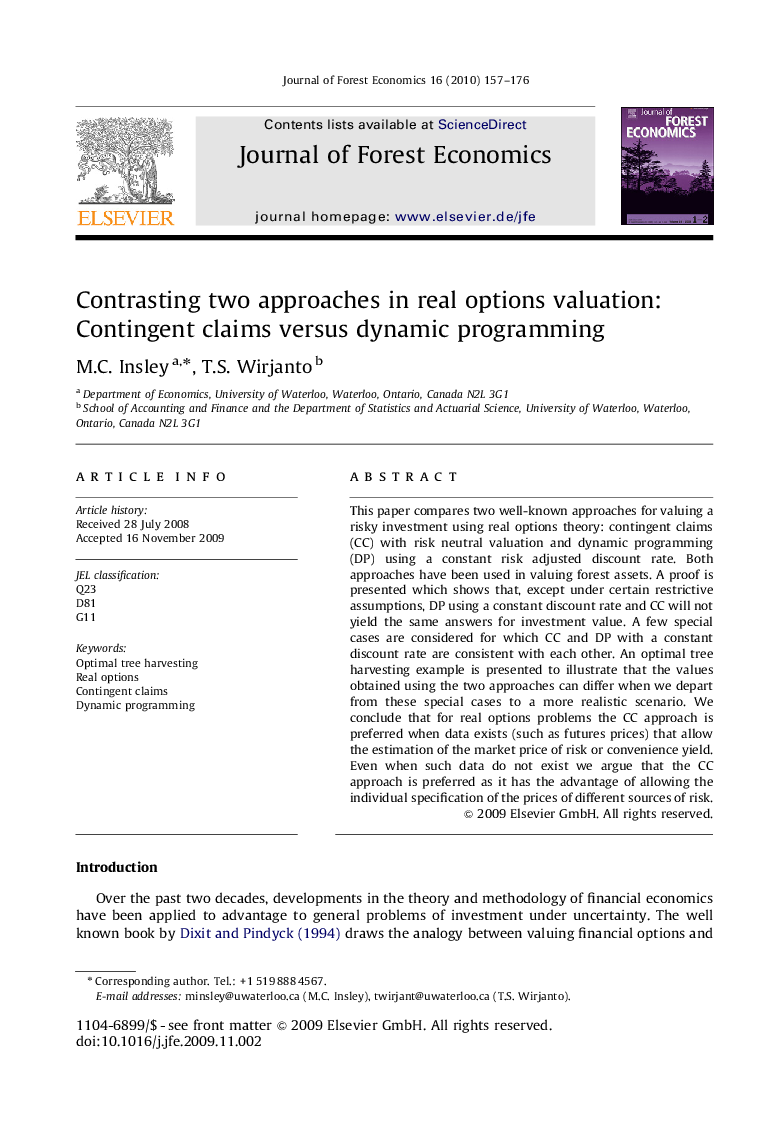| Article ID | Journal | Published Year | Pages | File Type |
|---|---|---|---|---|
| 92340 | Journal of Forest Economics | 2010 | 20 Pages |
This paper compares two well-known approaches for valuing a risky investment using real options theory: contingent claims (CC) with risk neutral valuation and dynamic programming (DP) using a constant risk adjusted discount rate. Both approaches have been used in valuing forest assets. A proof is presented which shows that, except under certain restrictive assumptions, DP using a constant discount rate and CC will not yield the same answers for investment value. A few special cases are considered for which CC and DP with a constant discount rate are consistent with each other. An optimal tree harvesting example is presented to illustrate that the values obtained using the two approaches can differ when we depart from these special cases to a more realistic scenario. We conclude that for real options problems the CC approach is preferred when data exists (such as futures prices) that allow the estimation of the market price of risk or convenience yield. Even when such data do not exist we argue that the CC approach is preferred as it has the advantage of allowing the individual specification of the prices of different sources of risk.
